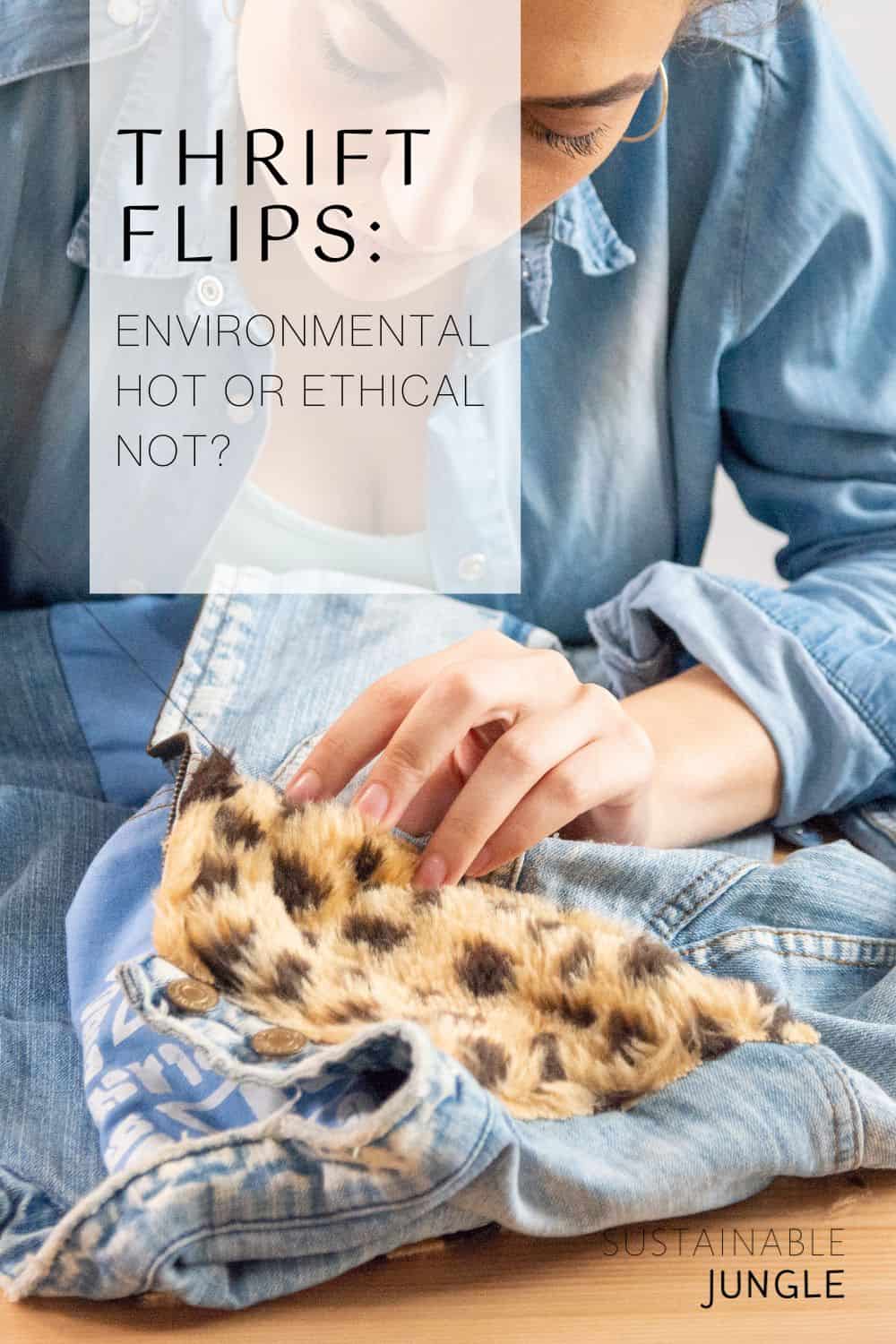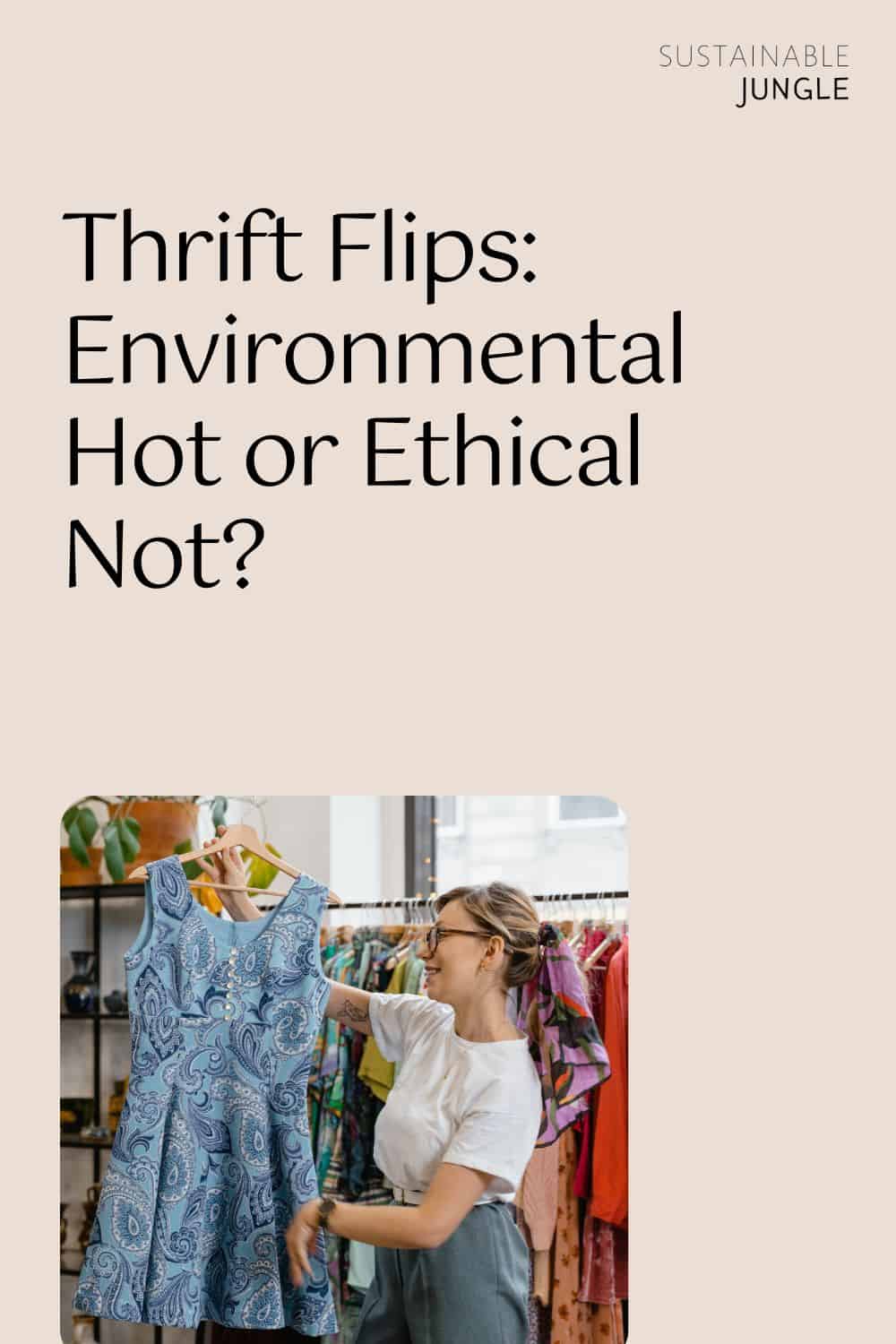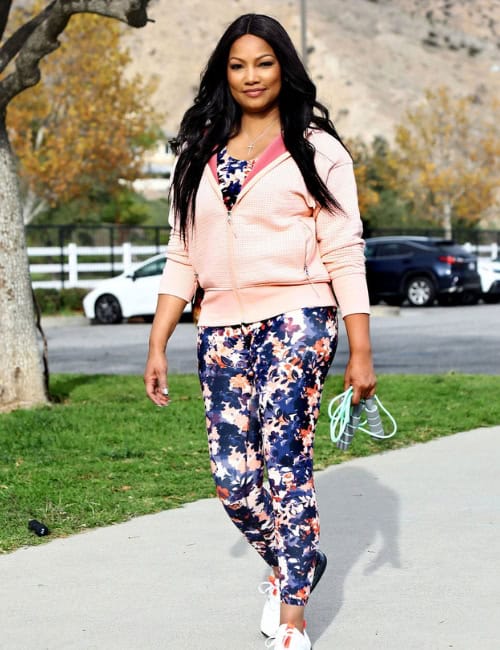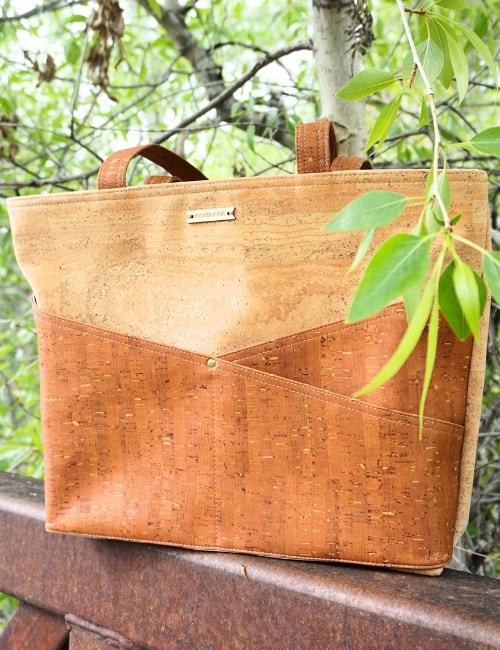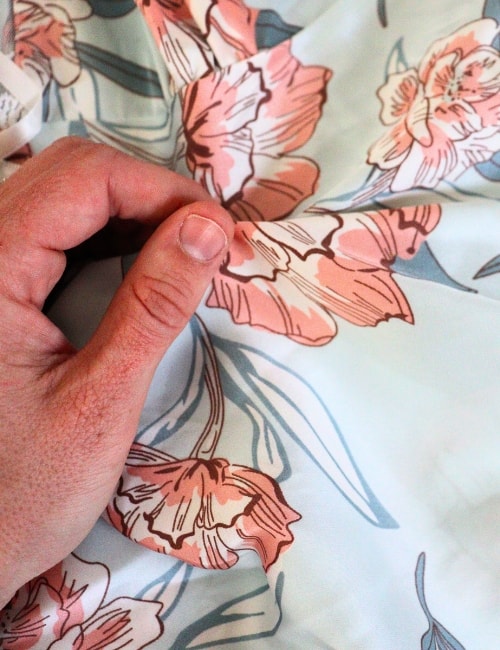
Thrift Flips: Environmental Hot or Ethical Not?
Thrift flips: a popular sustainable fashion trend with a raging debate. Is it a fashion faux pas or ethically en vogue?
Thrifting used to be a practice used by mostly lower-income shoppers to save money and gain access to affordable clothes, furniture, and home goods—hence the term “thrifty”. For many, thrift shopping was simply akin to just shopping for needed goods.
But with today’s surge in thrift store flipping, more people are motivated to thrift as a pastime and side hustle, rather than a necessity.
In turn, this affects the availability of secondhand clothes for those who really need it. Issues of access, gentrification, diversity, and inclusion are at the heart of the #ThriftFlips debate.
But on the (thrift) flip side, thrifting in general is a counter-cultural response to capitalism and fast fashion.
Reselling thrift store clothes and other items (AKA thrift flip) promotes a more ethical wardrobe, can be the source of a side income, benefits the environment, and helps reduce carbon emissions and textile waste alike.
And there’s no denying the magic of purchasing items loved before is making a major comeback.
ThredUP—one of the most popular and renowned online thrift stores—issued a Resale 2021 Report that states at least 33 million people decided to purchase items secondhand for their first ever time in 2020-2021.
The value of the secondhand market is expected to reach $77 billion, nearly double its current to $36 billion valuation.
That said, let’s roll up our (second hand) sleeves and dig into the (clothing) piles of opinions right now about the thrift store flipping trend, and why thrift flipping clothes and other items may not be as harmless as we think.
Is Thrift Store Flipping Ethical? All The Considerations
1. What Is Thrift Flipping?
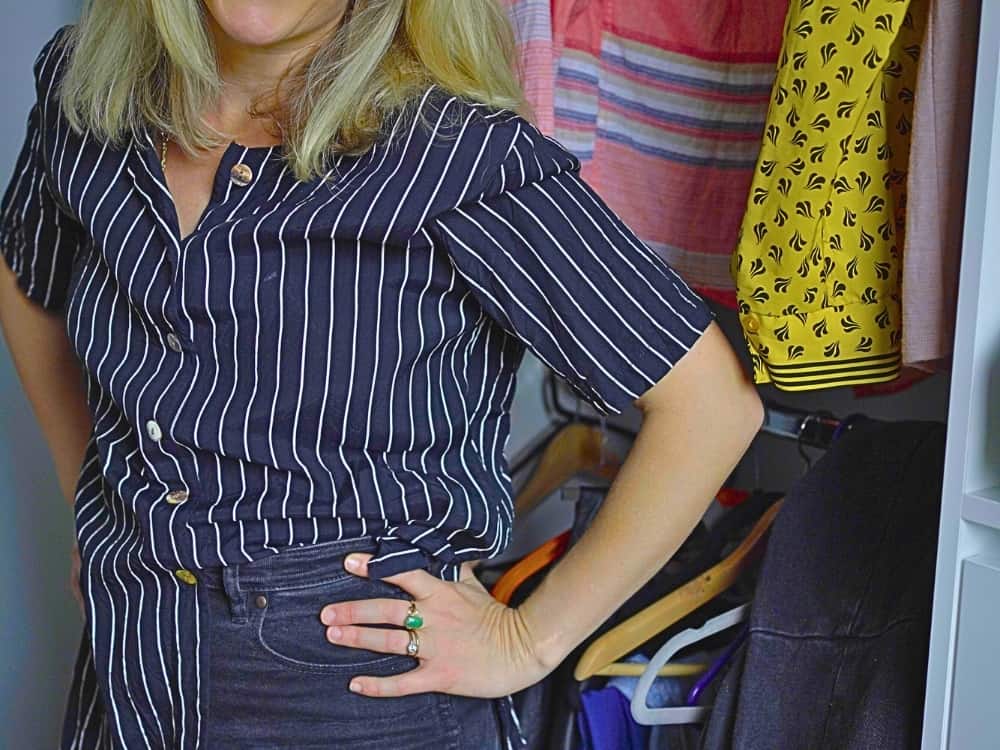
We’ve all heard of “house flipping” before, but what about the viral trend of thrift flipping?
If you’re not among the TikTok-fluent Zoomers, you might still be wondering: what does “thrift flip” mean?
To thrift flip means to find hidden gems among pre-loved thrift store items that have a higher resale value than the thrift store might be charging, with the intention of reselling for a higher price.
Sometimes, this involves repurposing, repairing, and improving the original garment—yielding actual upcycled clothing—while in others, it’s simply reselling the garment as-is in the appropriate market that will appreciate it.
For example, a thrift flipper might score a rare vintage piece from a thrift store for a pittance and resell it on Etsy or in a vintage consignment store for something exponentially higher.
It doesn’t have to be vintage, either. Thrift flippers might turn a $10 Patagonia fleece into a $50 profit margin through an online used outdoor gear store.
More creative thrift flip ideas are endless: an oversized thrifted men’s shirt becoming a mini-dress, to workwear overalls getting cyanoprinted, jeans becoming a purse, a hoodie transformed into a corset, or mom jeans from the 90s getting some fashionable flare.
With thrift shop flipping, Gen Z kids (who are the main sellers) take the concept of celebrating thrift store finds to a whole new level, with Instagram and TikTok there to prove it. With 2 billion+ thrift flipping videos online, the thrift store flip is the latest major fashion trend.
It’s not exactly a new concept—upcycled fashion brands have been around for decades, as has the debate around privilege and upcycling.
Upcycling has always been popular because it not only gives a creative new life to clothing, but it also adds extra money to the thrift-flipper’s pocket.
So is thrift flipping profitable?
If you know what the best thrift store flips are (brands, styles, eras, recreation ideas), it can absolutely add to your bank account—but is thrift flipping ethical?
But as with anything online, the thrift flip also has huge viral backlash.
It seems like an innocuous, environmentally positive trend, but there’s enough TikTok-ers calling out the practice for gentrifying charity shops, economic inaccessibility, and fatphobia that it’s worth discussing.
2. Is Thrift Flipping Unethical?
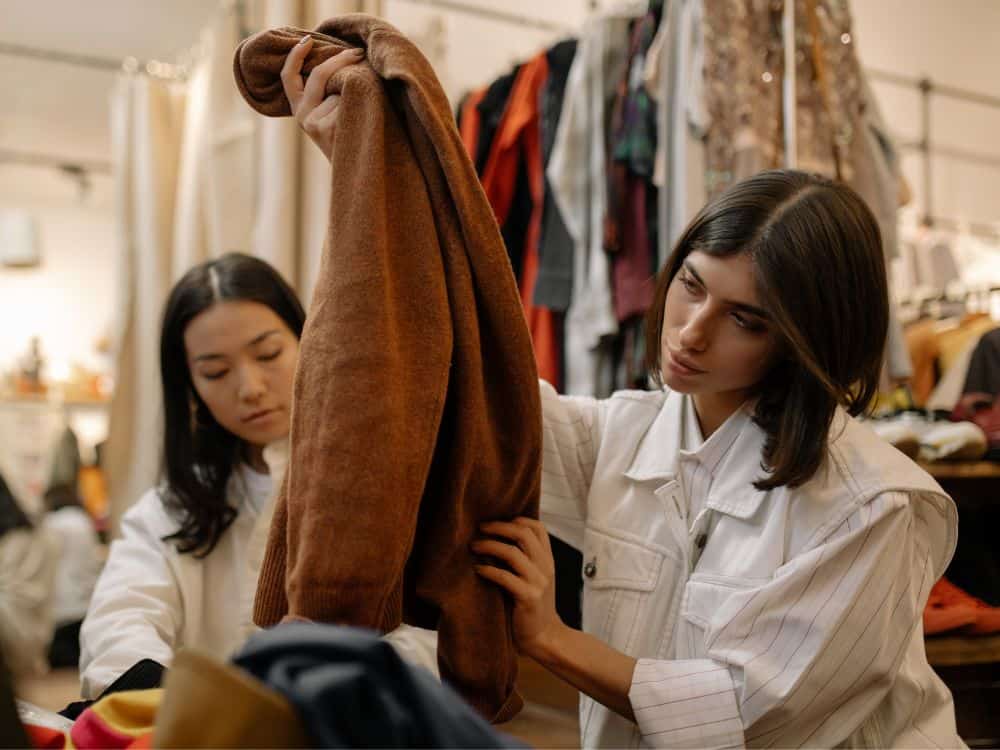
Reselling thrifted items like clothes may help the environment in that it’s helping ensure they find a second home—instead of joining the other 90% of donated items that don’t—but it doesn’t come issue-free.
Especially since any environmental benefits are really just a happy bonus of thrifting for profit, rather than the driving motivation behind the movement.
Let’s look at some of the biggest criticism behind thrift flipping clothes:
Thrift Flip Criticism #1: Fatphobia
One peruse of the #ThriftFlip hashtag, and the pattern is clear: young, attractive people take oversized garments that are way too big for them from thrift stores and turn them into something small and showy.
Many feel this propels fatphobia, something unfortunately not new to the world of fashion. In this way, it’s argued that thrift flipping continues the legacy of unrealistic beauty norms and perpetuates the notion that curvy is ugly and bad.
Thrift Flip Criticism #2: Oversumption
Overconsumption of thrifted items low income communities actually need is another important critique of #thrifthaul culture.
Because the thrift flipping trend supports keeping up with the current trends, in spite of items being repurposed from old clothes (good!), it also encourages subscribing to the ever-evolving latest trends (not good!) and taking away from those low income communities who really need it (really not good!)
As a collective, we need to critically evaluate our relationship toward shopping and psychologically assess why we need to buy so much, even if they’re super cheap thrifted items.
Thrift hauls—and online gloating about flipping thrift store items—contributes to a culture of overconsumption and disposability. We all need to really ask ourselves if we need another something-or-other in our wardrobes, even if it is from a thrift store.
In order for the act of thrift store reselling to really take sustainability to the next level, the trend needs to challenge the entire paradigm of trends, overconsumption, and the disposable culture of contemporary fashion.
Thrift Flip Criticism #3: Privilege
Then there is the issue of privilege and access to thrift stores.
If thrift flippers buy huge amounts of high quality items at great prices from local thrift stores in low income neighborhoods, for example, this prevents access to affordable or designer clothing for those who really need it.
Especially if garments purchased from thrift stores are plus-sized, this becomes a legitimate issue, since it’s already “slim pickings” due to fashion’s inclusivity problem.
Thrift Flip Criticism #4: Gentrification
There’s no denying thrift store items are going up in price. What used to be a very affordable way to shop now often comes at a higher price, especially at the larger chain thrift stores like Value Village or Goodwill.
The question is why this is happening.
Does flipping Goodwill items drive up their cost? Are thrift stores being gentrified as a result of the #ThriftFlips trend? Or because of current economic times?
Realistically, it’s a mix of both.
3. Is There a Real Thrift Flipping Issue?
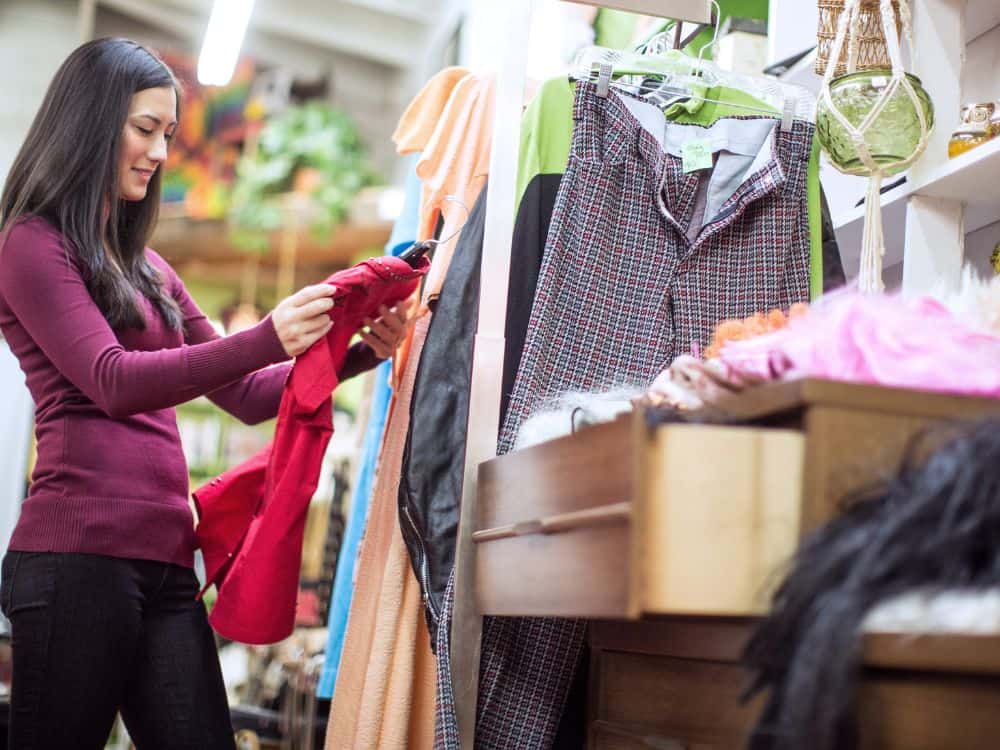
While some argue thrift flipping items is responsible for the gentrification of many thrift stores, that it drives up the prices of thrift clothing, and that it is also rooted in fatphobia, we’re going to partially disagree.
In terms of gentrification, this isn’t really new. Long before the viral trend of thrift flipping, people were warning of the wealthy and affluent co-opting thrift shopping and taking things from low-income people who actually need it.
With the advent of platforms to sell clothes online like Vinted and Depop, it’s true that more and more people are making money selling used items for higher prices instead of donating them.
And yes, it’s true the price of secondhand clothing is rising.
While these concerns are all valid, the reality is that the world simply has way too much clothing already.
The amount of donations to charity shops grows massively every year, and it’s far greater than what most thrift stores can manage. Many don’t know what to do with all their donations.
So while some argue thrift flipping is making valuable resources scarce, it’s difficult to believe it’s the case.
What is most alarming is what happens to clothes that aren’t purchased from secondhand shops. Unfortunately, only a dismal portion of unsold clothes are recycled.
Instead, 84% of clothes end up in landfills or shipped to countries like Ghana (hello, overseas shipping emission), who find their communities overwhelmed by unwanted clothes.
As the third-biggest manufacturing industry, clothing production is responsible for 10% of all carbon emissions globally.
If we want to mitigate the horrible environmental impact of the fashion industry, practices like thrift flipping can help. A rise in the secondhand market (hopefully) means a decline in demand for new clothing.
Plus, reselling thrifted clothes means giving new life to items that would probably otherwise end up in a landfill, releasing carbon dioxide.
For this reason, we give conscious thrift flipping a thumbs up: people need to keep clothes out of landfills by flipping and giving new life to clothing while reducing waste and supporting charity shops.
Anything that people can do to reuse and repurpose is really a “win” to us.
4. How To Thrift Flip Clothes Responsibly
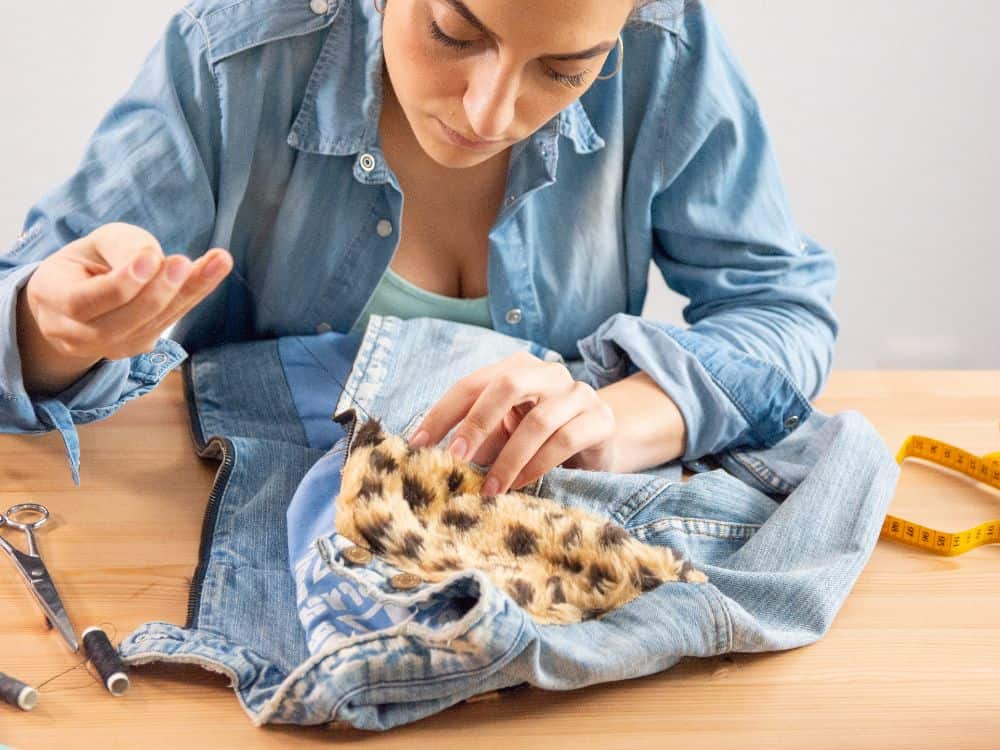
Can you make money thrift flipping from time to time without perpetuating its problematic side effects?
Sure. There are ways to approach thrifting and thrift flipping in a more conscious manner.
First off, we need to recognize that the ability to sell or buy and transform clothes is a privilege and one that should be exercised in moderation.
For example, a conscious thrift flip would avoid “thrift hauls”, where huge amounts of clothes are purchased. They would also avoid buying in-demand items or items from shops in lower-income neighborhoods who may really need them.
Likewise, fatphobia is something important for us to overcome. Making fun of an oversized “before” garment online compared to the new, slender “flipped” garment isn’t a practice thrift flippers should perpetuate any further.
That said, thrift flipping is a mostly positive thing. It takes away any stigma around buying secondhand items, supports creativity, is usually a good deal, and moves us toward a slow fashion mindset.
Online thrifting grew 69% between 2019 and 2021. Some even predict that the fashion resale sector will be a larger business than fast fashion within a decade.
Since thrifting and the thrift reselling trend is here to stay in a big way, there are a number of ways to stay mindful about it with these ethical thrift flipping tips:
- Be conscious of your intentions. Take a moment’s pause before you shop till you drop at the local charity thrift store.
- Stay away from in-demand, popular items to thrift flip. This is especially the case if you’re thrifting in lower income neighborhoods.
- Be aware of sizes. Don’t buy items way outside your size range. The availability of mid-size items is actually a privilege that plus-sized people often don’t have.
- Make a wishlist. This can help curb overconsumption.
- Choose higher quality items to flip that will last. Also look for natural and sustainable fabrics (like linen, cotton, some denim, and hemp fabric). Synthetic fabrics—even those that are secondhand—release microplastics into our waterways and cause bioaccumulation in aquatic life.
- Buy from online marketplaces, yard sales, or smaller thrift stores instead of big ones if possible. Controversies have surfaced about the hierarchy of Goodwill, where higher up employees and the CEO earn massive salaries while in-store staff barely earn minimum wage, meaning your Goodwill flipping isn’t supporting the mission you might think it is. Similarly, The Salvation Army has been accused of discriminating against LGBTQ folks.
- A better option is to host a clothing swap event among friends and your community to find items to flip.
- Or start in your own closet. Why pick up clothing from a thrift store when your own old jeans can be the canvas for endless upcycling ideas?
- Be transparent and honest with product marketing and pricing when flipping thrift store clothes. Don’t trick people and honestly note any flaws, imperfections, or defects.
- Sell your thrift flip creations IRL instead of online. In person is more eco-friendly because of the impact of shipping. If you do ship, consider using a fraction of your profits to support carbon offset programs. If reselling from thrift stores on Etsy, they’ll do this on your behalf.
5. Thrift Flips As An Answer To Fast Fashion
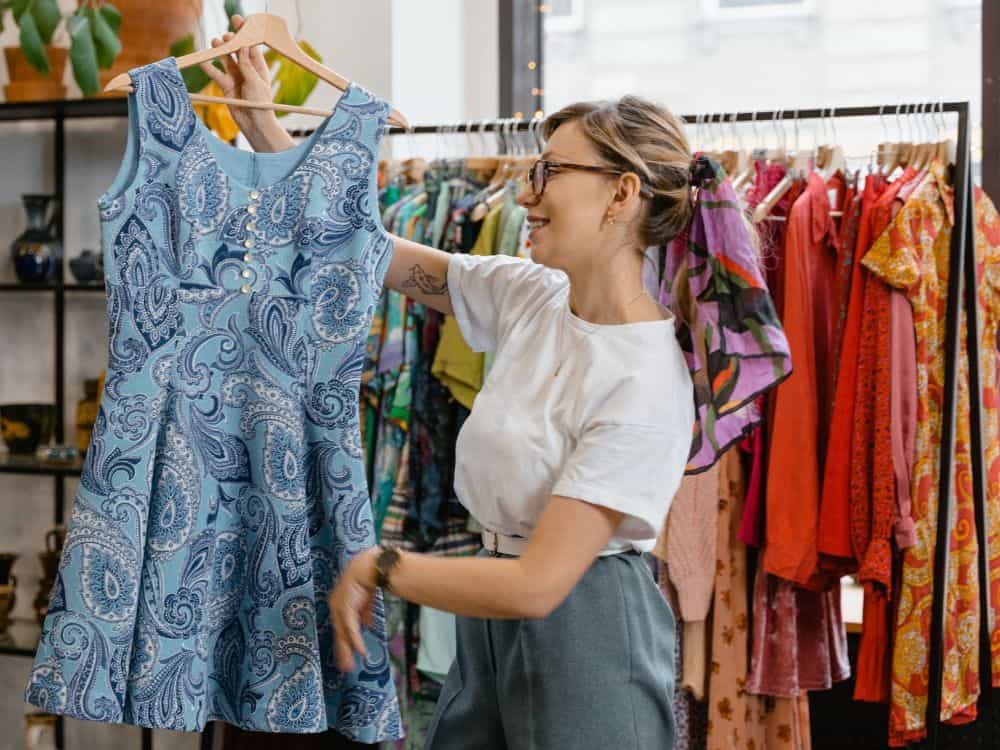
Instead of shaming or disavowing thrifting and thrift flippers, we think communities and the environment are helped when people repurpose clothing in a responsible and conscious manner.
The larger issue our planet faces is the unsustainable nature of the fast fashion industry.
It’s not new news that it’s inundated by complex issues of waste, overconsumption, environmental harm, human and planetary exploitation, and brutal standards of beauty.
Plus, throw-away culture is rampant, which is why finding a new life for old clothes through thrift shopping or thrift flipping helps effect systemic change.
If your local thrift shop only has cheaply made clothing or a narrow size range, this probably isn’t because of greedy thrifty flippers, but rather because the lack of well sized, well-made clothing is a problem at the root of the supply chain. (Like, practically nonexistent to begin with.)
If we consciously thrift, we can help shift our values to a world that reuses what it’s already got, instead of perpetually chasing something new and shiny.
Did you know we Have a Newsletter?
We cover the latest in sustainable living, fashion, zero waste, beauty, travel, finance and more…
Final Thoughts On Thrift Store Flipping
Intention is everything.
If we can thrift flip while cognizant of our global consumption habits, issues around size inclusivity, and the wasteful nature of trend cycles, then we can begin to respond in a thoughtful, transformative way to the dominant fashion system.
We don’t believe in policing or shaming, especially if someone is shopping pre-loved. It inherently helps mitigate the effects of fast fashion and global textile waste.
No one should be made to feel guilty or discouraged from buying secondhand.
Instead, we think the thrift flipping debate serves as a healthy reminder to be thoughtful and conscious, whether we’re thrifting, thrift flipping, or developing other alternative practices for a more sustainable and equitable consumer culture.
Thrifting is here to stay, and we’re in full support of that. So, please share this article with your fashionista friends and family the next time they ask, “How do you get into thrift flipping?”
Pin these:
